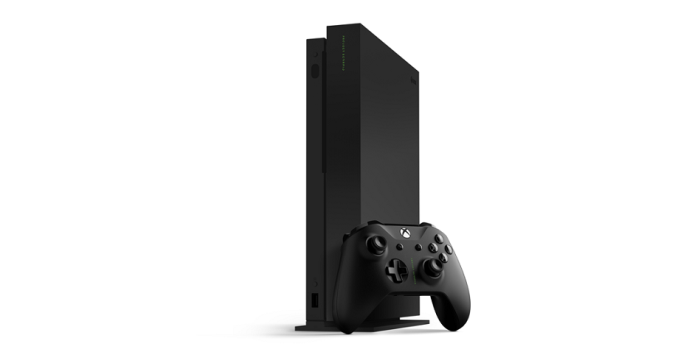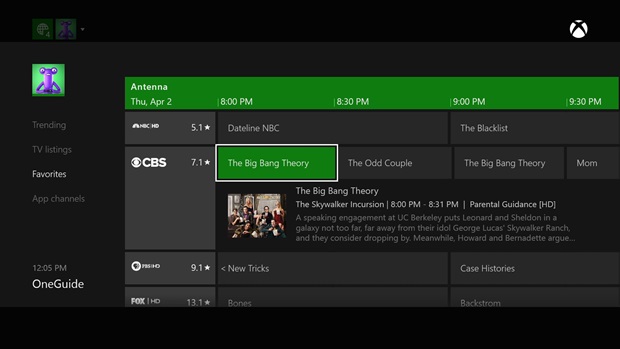The Xbox One X Review: Putting A Spotlight On Gaming
by Brett Howse on November 3, 2017 3:01 AM EST- Posted in
- Consoles
- Microsoft
- Xbox One
- Xbox
- Xbox One X
Power Usage
There’s a lot of performance on tap in the Xbox One X, which never comes with no strings attached. Like the Xbox One S, the APU inside is built on TSMC’s 16 nm FinFET process, which should help keep power usage under control. In addition, the Xbox One X is outfitted with a power supply that Microsoft equates to an 80 Plus Gold unit, which means it should be 90% efficient at 50% load with a 115 V source, and there shouldn’t be too much extra power wasted from the PSU converting AC voltage.
There’s several scenarios we tested for power usage:
Off – Xbox One X is powered off in Energy Savings mode, which means standby mode is disabled.
Standby – Xbox One X is powered off in Instant-On mode, which allows background updating and voice activation enabled (if supported).
Idle – Ethernet connected, no disc in the drive, system idling at dashboard.
Load (UHD BD Playback) – Ethernet connected, UHD Blu-Ray disc in the drive playing Planet Earth II, compared to The Hobbit on Blu-Ray on the original Xbox One.
Load (GoW4) – Ethernet connected, no disc in the drive, playing Gears of War 4 in UHD/HDR.
Load (The Wolf Among Us) – Ethernet connected, no disc in the drive, playing The Wolf Among Us in FHD SDR.
We’ve been able to compare against the original Xbox One, although not the S model as we didn’t have one on hand. The Wolf Among Us was chosen as an older game which caps at 1080p and SDR, and Gears of War 4 shows the power draw at full 4K HDR rendering. The comparison against the original for this game will of course be for the 1080p version though, since that’s the max it supports.
| Power Consumption Comparions | |||||||
| Total System Power | Energy-Saving | Instant-On | Idle | Load (UHD BD) | Load (GoW4) | Load (The Wolf Among Us) | |
| Xbox One | < 2W | 14.2W | 53W | 80W | 107W | 102W | |
| Xbox One X | < 1W | 10W | 56W | 64W | 172W | 101W | |
As with the original Xbox One, when Instant On is disabled, the console is practically fully off. There’s a small amount of draw, but overall, not very much. Most people that use the console are going to likely want it in Instant On mode though, so games and the console can update while the system is off, as well as to provide a much quicker startup time, and games can remain loaded in RAM. In Standby mode, power draw is reasonable at 10 W, which is lower than the original console when it first launched. It’s still a fair bit of power, but when you factor in that it needs to keep 12 GB of GDDR5 memory powered up (among other things), it is not unreasonable to expect this amount of power draw.
Idling at the dashboard draws around 55 W, and to add to that, most non-gaming tasks don’t add very much to this total, if any. If you’re using your Xbox to passthrough HDMI from a cable box, it will take this same power draw. Maybe this would be an impossible pipe dream, but it would be nice to see the Xbox One also pass through HDMI when it is in Standby mode.
Playing back a UHD Blu-Ray (standard Blu-Ray on the original Xbox One) was a tiny bit higher than idle, which is good to see. Some of the draw would be the disc drive itself, but a lot of the playback would be offloaded to fixed function hardware in the media block so it’s not surprising to see it so close to idle.
Clearly gaming on older Xbox One games is not much of a chore for the Xbox One X, since the power draw is only about 50 W over idle. But, when gaming with an Xbox One X Enhanced title, such as Gears of War 4, the power draw jumps significantly to 172 W as the peak observed. This is quite a jump over the original console, and makes the cooling system, which is barely audible even under these loads, even more impressive. Compared to a high-end gaming PC though, the power draw is quite a bit less.












128 Comments
View All Comments
Jumangi - Saturday, November 4, 2017 - link
Cause they had no reason too?12GB of 384bit GDDR5 means plenty of bandwidth.
vladx - Saturday, November 4, 2017 - link
I think he meant original Xbox One/S using eDRAM instead of eSRAM.vladx - Saturday, November 4, 2017 - link
eSRAM is faster and more power efficient than eDRAM already, that's the reason.NXTwoThou - Friday, November 3, 2017 - link
I'm just shocked it didn't launch with Mixed Reality support.mooninite - Friday, November 3, 2017 - link
I can't wait for the Xbox One XXX!!... oh, wait.trane - Friday, November 3, 2017 - link
Polaris has developed a poor reputation for being inefficient, but this just shows how efficient it can really be. Scorpio Engine's GPU is basically RX 580 level of shader throughput, but with greatly increased memory bandwidth. (Yes, I'm aware it's shared, but given the memory bandwidth of a mainstream CPU, it's still ahead)Scorpio Engine uses something like ~120W over idle, at load. RX 580 is more like 180W over idle.
That is an insane 50% increase in perf/W. PS4 Pro is even more efficient, but perhaps that's not fair because it's just clocked so low.
Even compared to the similarly clocked RX 470s, the Scorpio Engine draws similar amount of power for at least 25% more performance. You want another comparison? That's also how much power a reference GTX 1060 draws, and I'm willing to bet Scorpio Engine is a tad faster.
Could it be TSMC simply has a large advantage over GF? After all, Nvidia's 14nm GP107 clocks much lower than their other higher end 16nm chips, too. I mean,
Dragonstongue - Friday, November 3, 2017 - link
likely a result of MSFT taking the time to optimize the core voltage for the clocks needed, something AMD did not seem to do, a 570 or a 580, heck most of the various Radeon released the last couple of years can use a fair amount LESS power/heat while upping the clocks when the base voltage or power slider is adjusted, almost like AMD did not truly optimize the settings or somethingSuppose MSFT took that extra time to fully tune the cpu and gpu side of the equation to get them as close to minimal power draw as possible which helps them keep costs of BOM down (cooling required, power supply needs etc)
would be really nice if Xbox offered something PS4 does not, seeing as they are windows esque, more office productivity type stuff such as word pads, media player etc, like a mini computer they seem to want to try and emulate, that is the one thing stopping ME from buying any current console, cannot do what I can on my PC, that s take notes, wordpads to track my daily costs and so forth.
vladx - Saturday, November 4, 2017 - link
Like Dragonstongue says above, it's mostly because Microsoft requested heavily-binned GPU dies which allowed them to optimize perf/w to the utmost limit. Nothing to do with the fab used, a heavily-binned GTX 1060 would most likely be even more power efficient than that.UltraWide - Friday, November 3, 2017 - link
Does it have HDMI-CEC support?scbundy - Friday, November 3, 2017 - link
I imagine so. When I turn off the Xbox One, it turns off the Receiver and the TV.